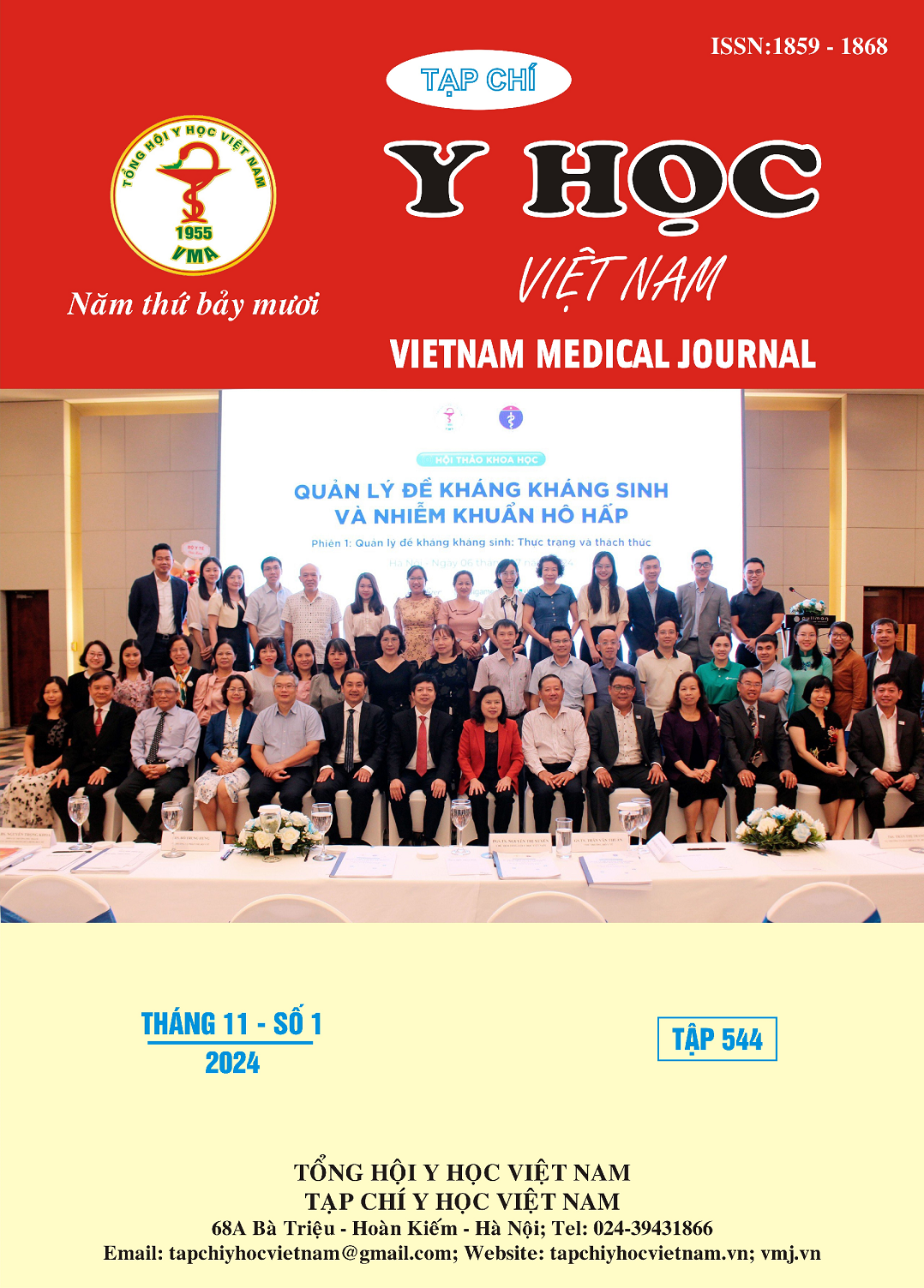EVALUATE THE EARLY RESULT OF ENDOVASCULAR TREATMENT FOR SUBCLAVIAN ARTERY STENOSIS OR OCCLUSION
Main Article Content
Abstract
Objectives: To survey the clinical and paraclinical characteristics of subclavian artery stenosis and to evaluate the early results of endovascular intervention for treating this condition. Methods: This is a retrospective study of patients who underwent endovascular intervention for subclavian artery stenosis at the Department of Vascular Surgery at Cho Ray Hospital from December 2013 to April 2022. Results: The most common symptoms are limb pain (100%), numbness (84%), the pressure difference between arms >15mmHg (72%), and pulse loss (68%). All 100% subclavian arteries were recorded to have occlusive lesions and stenosis at the first segment, including 5 cases of stenosis in both the proximal and middle segments (20%) and 1 case of stenosis reaching the distal segment (4%). Stenosis from 70-95% accounts for 65.39%, 4 cases of 96-99% stenosis (15.38%) and 5 cases of complete obstruction (19.23%). Successful intervention is 24 cases (96%). After intervention, all patients had good patency, with only 1 case of mild stenosis <30% and 2 case of residual stenosis ≥30%. Regarding complications after intervention, there were 2 cases of hematoma at the needle puncture site (8%). All patients who had successful interventions showed an improvement in clinical symptoms, with significant reduction in limb pain. With respect to pulse loss, except for 1 case where the intervention failed, all remaining patients after successful intervention had a palpable pulse. Conclude: Endovascular intervention for subclavian artery stenosis achieves high success rates, low complication rates, and significant symptom improvement, while maintaining effective blood circulation both subclinically and clinically one month after the intervention.
Article Details
Keywords
endovascular intervention, subclavian artery stenosis.
References
2. Potter B.J., Pinto D.S (2014). Subclavian steal syndrome. Circulation, 129(22):2320-2323.
3. Stone P.A., Srivastiva M., Campbell J.E, et al (2010). Diagnosis and treatment of subclavian artery occlusive disease. Expert review of cardiovascular therapy, 8(9):1275-1282.
4. AbuRahma A.F., Robinson P.A., Jennings T.G (2000). Carotid-subclavian bypass grafting with polytetrafluoroethylene grafts for symptomatic subclavian artery stenosis or occlusion: a 20-year experience. Journal of vascular surgery, 32(3):411-419.
5. Phạm Minh Tuấn và cộng sự (2021). Đánh giá kế quả can thiệp nội mạch ở bệnh nhân hẹp động mạch dưới đòn. Tạp chí Tim mạch học Việt Nam.
6. Dobrota S., Filipović-Grčić L., Perkov D., et al (2021). Endovascular treatment of subclavian stenosis–single center experience. Rad Hrvatske akademije znanosti i umjetnosti Medicinske znanosti, 547(54-55):32-37.
7. Wang K-q, Wang Z-g, Yang B-z, et al (2010). Long-term results of endovascular therapy for proximal subclavian arterial obstructive lesions. Chinese medical journal,123(01):45-50.
8. Asil S., Eşki S., Geneş M., et al (2021). Endovascular Treatment of Subclavian Artery Stenosis: Single-Center Experience. E Journal of Cardiovascular Medicine, 9(3):136-142.


